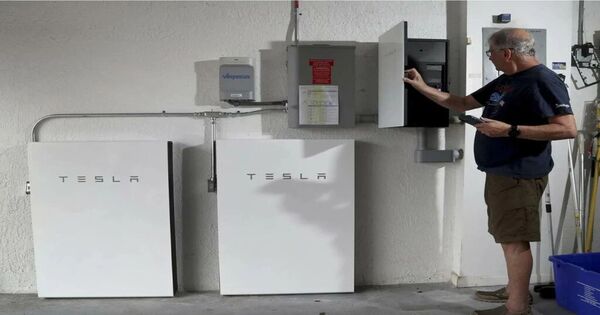Tesla Energy manufactures the Tesla Powerwall, a stationary home energy storage solution powered by rechargeable lithium-ion batteries. The Powerwall stores electricity for solar self-consumption, time-of-use load shifting, and emergency power. It is intended to store energy on a domestic scale for backup power during outages or for everyday use to promote self-consumption of solar power generation.
The Powerwall can store excess solar energy during the day for later usage, such as in the evening or during a power outage. It can also assist customers in reducing their reliance on the grid and possibly save money on power costs by storing energy when rates are low and using it when rates are high.
The Powerwall is sleekly designed, wall-mounted, and can be monitored and operated remotely via a smartphone app. It is seen as a significant improvement in home energy storage technology and has grown in favor among homeowners seeking to lower their carbon footprint and increase their energy independence.
Powerwall 1 was debuted in 2015, with limited production. A larger model, the Powerwall 2, commenced into mass production at Tesla’s Giga Nevada factory in early 2017, while a more capable model with an inbuilt DC-to-AC inverter, the Powerwall 3, will be produced in late 2023. As of May 2021, Tesla had installed 200,000 Powerwalls.
Applications
The Powerwall is suitable for a variety of applications, including time-based control, backup power, and off-grid energy storage. It is commonly installed with solar panels to store extra energy generated during the day for usage during peak electricity demand periods or at night when the sun is not shining.
Tesla has been at the forefront of popularising residential energy storage options, and the Powerwall is one of their hallmark products in this space. It’s intended to be elegant, compact, and readily integrated into current electrical systems. With rising concerns about climate change and a desire for energy independence, technologies like the Powerwall are gaining popularity among homeowners hoping to lessen their carbon footprint and save money on energy bills.
















